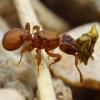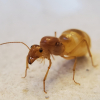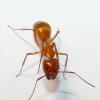Hi everyone,
my roommate just got a Ender 3 Pro 3D printer and we are really excited about using it. I currently house a few colonies, including two polygynous Solenopsis molesta and one young Temnothorax curvispinosus. I would love to get into 3d printing formicaria, but I have no idea where to start, especially for such small species.
I'd love to get into designing fomricaria as well as printing them—if you have any advice that could help me learn more about doing so, please share!
Thanks,
Void


















